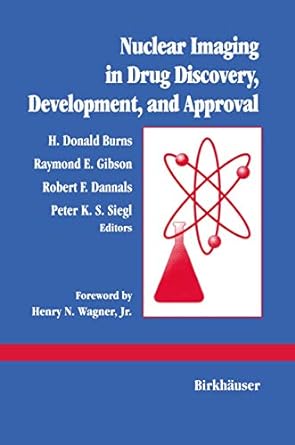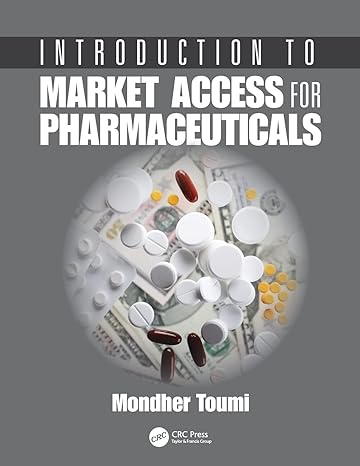Go back


Nuclear Imaging In Drug Discovery Development And Approval(1st Edition)
Authors:
H. Donald Burns, Raymond E. Gibson, Robert F. Dannals, Peter K. S. Siegl

Cover Type:Hardcover
Condition:Used
In Stock
Include with your book
Free shipping: April 06, 2024Popular items with books
Access to 3 Million+ solutions
Free ✝
Ask 10 Questions from expert
200,000+ Expert answers
✝ 7 days-trial
Total Price:
$0
List Price: $54.99
Savings: $54.99(100%)
Book details
ISBN: 1468468103, 978-1468468106
Book publisher: Birkhauser
Get your hands on the best-selling book Nuclear Imaging In Drug Discovery Development And Approval 1st Edition for free. Feed your curiosity and let your imagination soar with the best stories coming out to you without hefty price tags. Browse SolutionInn to discover a treasure trove of fiction and non-fiction books where every page leads the reader to an undiscovered world. Start your literary adventure right away and also enjoy free shipping of these complimentary books to your door.
Nuclear Imaging In Drug Discovery Development And Approval 1st Edition Summary: It is the purpose and business of the pharmaceutical industry to dis cover, develop, and make available drugs for the care of the sick. The purpose of universities and national laboratories is to provide people and scientific knowledge that can help in the process. This book presents the combined efforts of scientists from the drug in dustry, academic laboratories and national laboratories to describe advances in radiotracer technology in studies on experimental ani mals and living human beings. The authors believe that the technol ogy is now ready for widespread application in the pharmaceutical industry. The goal of this book is to help bring this about. The field of Nuclear Medicine is based on the concept that, if treatment of disease is chemical, the patient's diagnosis should be chemical. Anatomy and histopathology have been the principle ba sis for making a diagnosis. Histopathologic data suffer from being descriptive, subjective, not quantifiable, and based on the study of dead tissue. The era of histopathology as the dominant concept in medical practice is coming to an end. Histopathologic findings are often heterogeneous and a single biopsy will at times not reveal the true nature of the disease, such as the grading of malignancy. Far greater accuracy of staging of disease and in the planning of treat ment is possible through chemistry, as well as by making possible a more suitable selection of a histological biopsy site.
Customers also bought these books
Frequently Bought Together
Top Reviews for Books
Mohamed sami
( 5 )
"Delivery was considerably fast, and the book I received was in a good condition."










